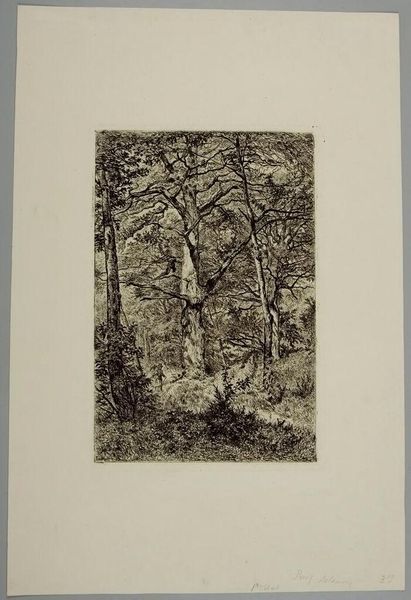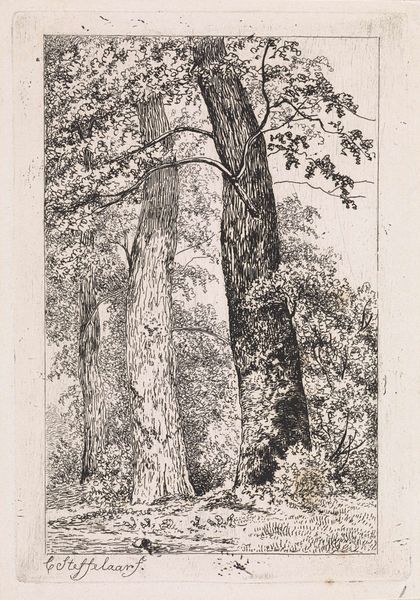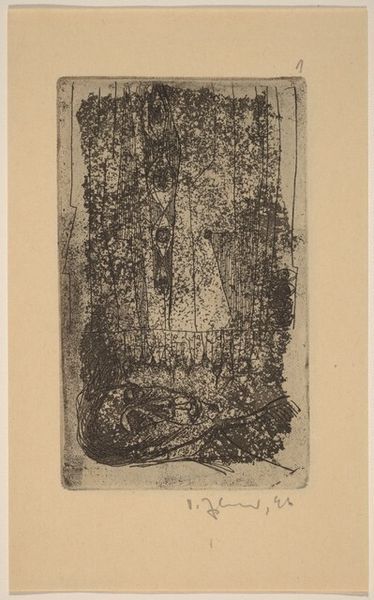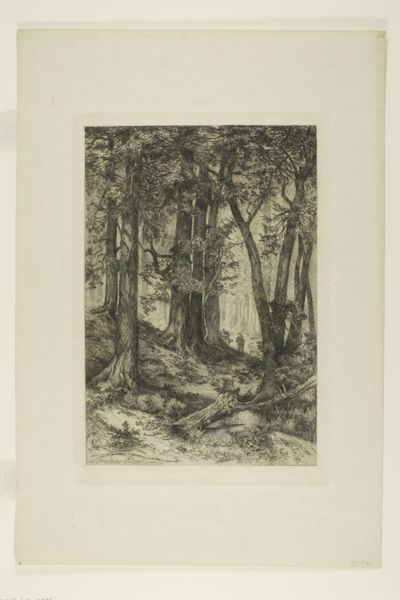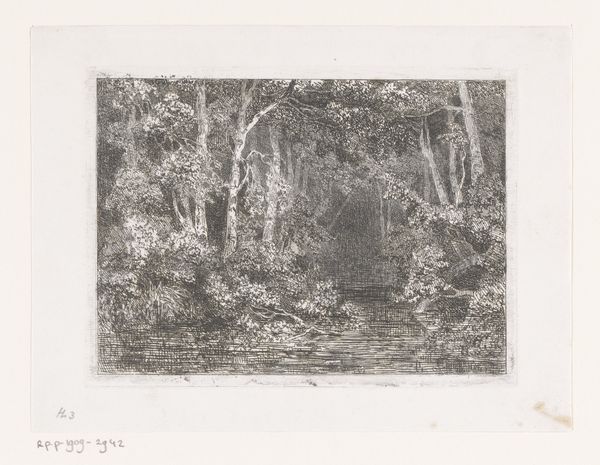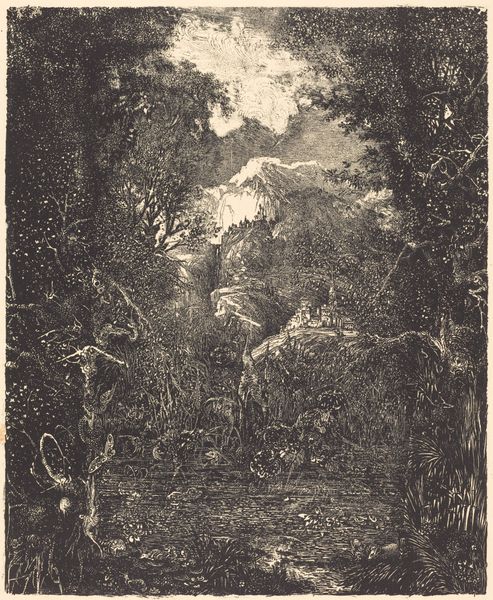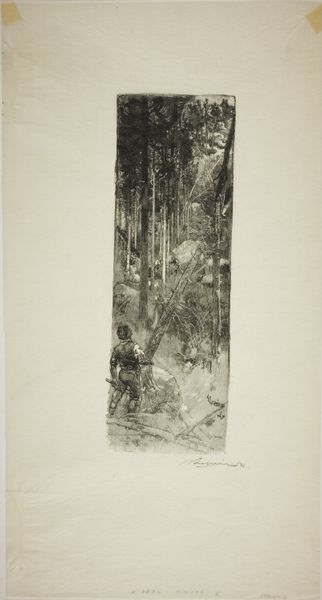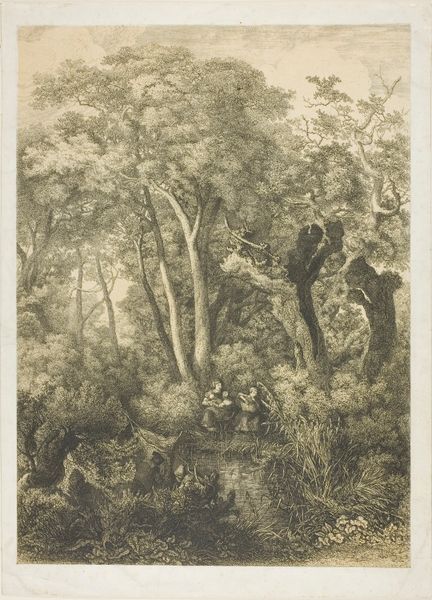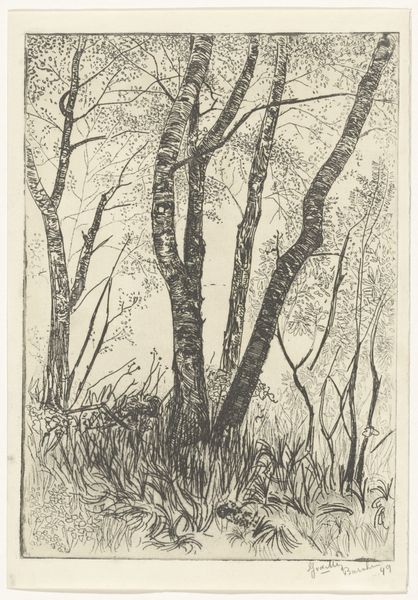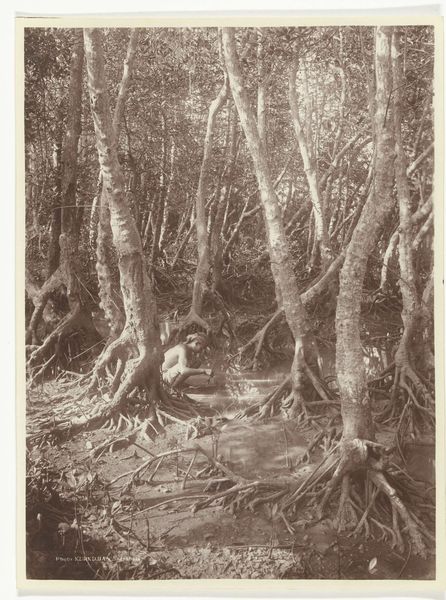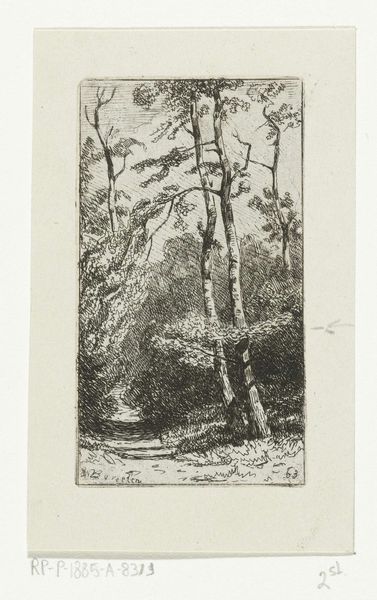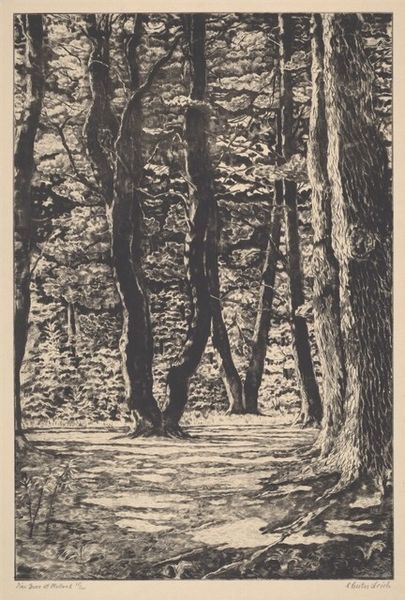
drawing, print, etching, graphite
#
drawing
# print
#
etching
#
landscape
#
charcoal drawing
#
pencil drawing
#
graphite
Dimensions: height 337 mm, width 226 mm
Copyright: Rijks Museum: Open Domain
Curator: Here we have Jacobus Ludovicus Cornet’s "Bos met beek," dating from 1825 to 1882, held in the Rijksmuseum collection. It is rendered in graphite, etching, drawing and printmaking. Editor: My first impression is one of hushed reverence. The image teems with dense, intricate detail. Curator: Let’s delve into that detail. We know this piece was produced through etching, which implicates considerations of labour in a period defined by intense industrial output and corresponding environmental consequences. How does this detailed laboring translate socially? Editor: The style of this artwork presents a compelling, yet familiar image, harkening back to the old trope of untouched wilderness, the domain for the colonizers' conquest. It invites contemplation of nature as a constructed entity rather than an independent reality, one devoid of indigenous connection to this landscape. Curator: Absolutely. Moreover, the means by which the artist engages with graphite and etching transforms this landscape, not just in representation, but physically through labor. One might ask to what extent Cornet engaged directly with the production of his prints or, more particularly, whether these methods engaged studio workers? Editor: Looking at how the stream divides the composition adds depth while highlighting ideas related to nature's bounty and division that can have cultural significance and broader narratives relating to access and privilege. Curator: Let's think about its production. How does it speak about landscape consumption, particularly concerning resources and industrial impact at the time? Editor: Through Cornet’s detailed method, the forest transmutes into a symbol echoing broader debates relating to nature, dominion, gender and politics during that period, compelling consideration of silenced narratives and colonial legacy. Curator: It makes me consider how we perceive landscape in connection with industry, labour and commodification during a colonialized era. It goes beyond just art history and calls for a more extensive discussion surrounding societal context. Editor: I agree; observing art via intersectional interpretation leads us into compelling discourses regarding cultural norms and power paradigms imbedded during artistic conception!
Comments
No comments
Be the first to comment and join the conversation on the ultimate creative platform.
